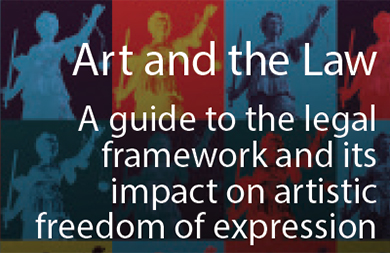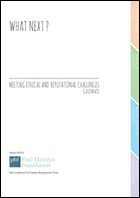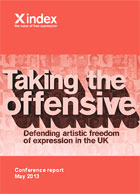19 Aug 2019 | Campaigns -- Featured, Statements
[vc_row][vc_column][vc_column_text]We are deeply troubled by the appointment of Lord Carlile as Independent Reviewer of Prevent. Not only has the government failed to follow its own Governance Code on Public Appointments, but Lord Carlile’s close ties with and publicly declared support for the Prevent strategy undermine the integrity and credibility of this review from the outset.
In January 2019, following Parliament’s insistence on an independent review of Prevent, the government announced that such a review would occur. Proponents of the review have consistently called for it to be meaningfully independent and conducted by someone with no current or prior experience as a government-appointed reviewer.
In June, the government assured Parliament that the appointments process would follow the Cabinet Office Governance Code on Public Appointments.(1) Yet the government has failed to follow that Code, including by failing to publicly advertise the position and publish information about the selection criteria.
Lord Carlile cannot be considered impartial or independent. He has been a member of the Home Office’s Prevent Oversight Board (2) charged with “driving delivery” (3) of Prevent, and has declared his “considered and strong support” for the Prevent strategy.(4) In May this year, he told a public audience that “the appointment of a Prevent reviewer [is] completely unnecessary, based on fictitious or complete lack of evidence”.(5) Indeed, it seems that Lord Carlile himself doubts his ability to be impartial about Prevent, telling the House of Lords in 2018: “I admit I played a part in [Prevent], so I may be somewhat biased towards it […] and I accept the accusation of apparent bias as a possibility. However, I believe that Prevent has demonstrated that it has been successful”.(6)
There seems to be little purpose in an “independent review” whose outcome is pre-ordained by Lord Carlile’s self-declared partiality. His appointment to this vitally important position shatters the credibility of the review from the outset. The review should be comprehensive and wide-ranging in scope and not one that starts with the premise that Prevent should be continued and/or expanded.
We call upon the government to urgently rethink this appointment and ensure that the review is led by a genuinely independent person who inspires confidence in affected communities, with a willingness to go where the evidence may lead.
Liberty
Index on Censorship
Defend Digital Me
Medact
CAGE
Maslaha
MEND
The Runnymede Trust
JUST Yorkshire
Open Society Justice Initiative
- Response to Lord Anderson of Ipswich (HL16344), 27 June 2019, available at https://www.parliament.uk/business/publications/written-questions-answers-statements/written- question/Lords/2019-06-13/HL16344/.
- House of Lords, 17 December 2018, Hansard column 1637, https://hansard.parliament.uk/lords/2018-12- 17/debates/A45EE86B-0D09-472D-BF99-D64DDF9D5D20/Counter-TerrorismAndBorderSecurityBill (“I happen to be a member of the Prevent oversight board”); Joint Committee on Human Rights, Oral evidence: Legislative Scrutiny: Counter-extremism Bill, HC 647 9 March 2016, available at http://data.parliament.uk/writtenevidence/committeeevidence.svc/evidencedocument/human-rights- committee/countering-extremism/oral/30366.html.
- Response to Lord Carlisle of Berriew (HL 4388), 18 January 2017, available at https://www.parliament.uk/business/publications/written-questions-answers-statements/written- question/Lords/2017-01-09/HL4388/.
- Prevent Strategy, HMSO June 2011, CM8092, page 4.
- Remarks at the Open Government Partnership Global Summit, Ottawa, 31May 2019, plenary session. Available on YouTube https://www.youtube.com/watch?v=Xp9epxiKVy0 at 2hrs 51mins 45secs.
- House of Lords, 17 December 2018, Hansard column 1625, available at https://hansard.parliament.uk/lords/2018-12-17/debates/A45EE86B-0D09-472D-BF99-D64DDF9D5D20/Counter- TerrorismAndBorderSecurityBill
[/vc_column_text][/vc_column][/vc_row][vc_row][vc_column][vc_basic_grid post_type=”post” max_items=”4″ element_width=”6″ grid_id=”vc_gid:1566208746266-c88aa023-c11f-10″ taxonomies=”6867, 6534″][/vc_column][/vc_row]
16 Nov 2018 | Campaigns -- Featured, Counter Terrorism, Statements
[vc_row][vc_column][vc_column_text]
The government’s Prevent strategy – which forms one strand of the government’s overarching counter terrorism strategy, CONTEST – seeks to pre-empt acts of terrorism by identifying those at risk of committing such attacks, including by ‘intervening to stop people moving…from extremism into terrorist-related activity’.
Developed without a firm evidence base and rooted in a vague and expansive definition of ‘extremism’, Prevent has been widely criticised for fostering discrimination against people of Muslim faith or background and chilling legitimate expression. [1]
There have been repeated calls to establish an independent review of the Prevent strategy. [2] Three UN independent experts have called on the United Kingdom to launch an independent review of Prevent that incorporates a comprehensive assessment of its impact on human rights. [3]
The Counter-Terrorism and Border Security Bill is currently passing through the House of Lords. Amendments 57 and 57A would require an independent review of Prevent.
We urge members of the House of Lords to support these amendments and take this opportunity to ensure Prevent is at last subject to independent review.
Signatories:
Amnesty International
ARTICLE 19
Committee on the Administration of Justice (CAJ)
Human Rights Watch
Index on Censorship
Liberty
Medact
Rights Watch (UK)
Adriana Edmeades Jones, Legal and Policy Director of Rights Watch (UK), said:
“In the face of mounting evidence that Prevent is undermining relationships of trust and chilling expression in classrooms and consultation rooms across the country, it is clear that Prevent is simply not fit for purpose. It is in everyone’s interests – the communities who are targeted, the teachers, doctors and social workers tasked with implementing it, and the Government itself – that Prevent is subject to an independent review.”
Joy Hyvarinen, Head of Advocacy at Index on Censorship, said:
“An independent review of the Prevent strategy is overdue and essential if the government wants to tackle the widespread doubts about Prevent. The House of Lords should ensure that the Counter-Terrorism and Border Security Bill includes a review of Prevent”
Brian Gormally, Director of CAJ, said:
“If the categories, criteria and methods of Prevent were applied in Northern Ireland there would be an explosion of resentment in both Loyalist and Republican communities. Why then is it alright to use them in communities in Britain?”
Rachel Logan, Amnesty International UK’s Legal Expert, said:
“Prevent is a highly dubious scheme built on shaky, almost evidence-free, foundations – it’s sorely in need of a proper review. Peers need to ensure that Prevent is rigorously and independently assessed, with all the human rights impacts of the scheme fully investigated.”
Letta Tayler, HRW Senior Researcher on terrorism and counterterrorism, said:
“This amendment to the UK counterterrorism bill provides a good opportunity to ensure long overdue scrutiny of Prevent, a key part of the country’s counterextremism program. Intrusive security powers should have independent oversight.”
Footnotes:
[1] See for example Fahid Qurashi, The Prevent strategy and the UK ‘war on terror’: embedding infrastructures of surveillance in Muslim communities; Miqdaad Versi,The latest Prevent figures show why the strategy needs an independent review; Anna Lockley-Scott Preventing what? The flawed assumptions at the heart of the Prevent duty; David Goldberg, Sushrut Jadhav and Tarek Younis, Prevent: what is pre-criminal space; Charlotte Heath-Kelly and Erzsébet Strausz, Counterterrorism in the NHS: Evaluating Prevent Duty Safeguarding by Midlands Healthcare Providers; Teachers back motion calling for Prevent strategy to be scrapped; Royal College of Psychiatrists London, Counter-terrorism and Psychiatry Position Statement PS04/16; Liberty; Rights Watch (UK), Preventing Education? Human Rights and UK Counter-Terrorism Policy in Schools and Open Society Justice Initiative, Eroding Trust: The UK’s Prevent Counter-Extremism Strategy in Health and Education.
[2] See for example 7/7 Survivor and Charity CEO Calls for Urgent Independent Review of Prevent Strategy and MPs and Lords call for review of Prevent anti-terror strategy in schools,
[3] See Letter of the UN Special Rapporteur on the promotion and protection of human rights and fundamental freedoms while countering terrorism concerning the draft Counter-Terrorism and Border Security Bill which is currently under consideration of the UK’s House of Commons; Report of the UN Special Rapporteur on the rights to freedom of peaceful assembly and of association on his follow-up mission to the United Kingdom of Great Britain and Northern Ireland; and End of mission statement of the UN Special Rapporteur on contemporary forms of racism, racial discrimination, xenophobia and related Intolerance at the conclusion of Her mission to the United Kingdom of Great Britain and Northern Ireland.[/vc_column_text][/vc_column][/vc_row][vc_row][vc_column][vc_basic_grid post_type=”post” max_items=”4″ element_width=”6″ grid_id=”vc_gid:1542383020058-48aac27c-d559-4″ taxonomies=”27743″][/vc_column][/vc_row]
16 May 2016 | Art and the Law Commentary, Artistic Freedom Commentary and Reports, Campaigns -- Featured, mobile, News and features
Julia Farrington, associate arts producer, Index on Censorship, participated in the Theatre UK 2016 conference on 12 May 2016. This is an adapted version of her presentation.
In January 2013 I organised a conference called Taking the Offensive for Index on Censorship, in partnership with the Free Word Centre and Southbank Centre. The conference was held to debate the growth of self-censorship in contemporary culture, the social, political and legal challenges to artistic freedom of expression and the sources of these new challenges.
The report from the conference concluded that censorship and self-censorship are significant influences in the arts, creating a complex picture of the different ways society controls expression. Institutional self-censorship, which many acknowledged suppresses creativity and ideas, was openly discussed for the first time.
Lack of understanding and knowledge about rights and responsibilities relating to freedom of expression, worries about legal action, police intervention and loss of funding, health and safety regulations, concern about provoking negative media and social media reaction, and public protests are all causing cultural institutions to be overly cautious.
One speaker at Taking the Offensive suggested that we are fostering a culture where “art is not for debate, controversy and disagreement, but it is to please”.
There is above all, unequal access to exercising the right to artistic freedom of expression, with artists from black and minority ethnic encountering additional obstacles.
Many felt that far greater trust, transparency and honesty about the challenges being faced need to be developed across the sector; dilemmas should be recast as a necessary part of the creative process, to be shared and openly discussed, rather than something to keep behind closed doors. This will make it possible for organisations to come together when there is a crisis, rather than standing back and withholding support: “if we collectively don’t feel confident about the dilemmas we face how can we move on with the public?”
I think there have been significant changes in the three years since the conference and, whilst I think the same challenges persist, there have been some really positive moves to tackle self-censorship within the sector. The growth of What Next? has created precisely the platform to debate and discuss the pressures, dilemmas and controversies that the conference identified. What Next? has produced guidance on navigating some of these issues and is developing more resources on how organisations can support each other when work is contested.
Index on Censorship responded to the clear call from the conference for the need for guidance about legal rights and responsibilities if we are to create a space where artists are free to take on complex issues that may be disturbing, divisive, shocking or offensive.
We have published information packs around five areas of law that impact on what is sayable in the arts: Public Order, Race and Religion, Counter Terrorism, Child Protection and Obscene Publications. They are available on the website under our campaign Art and Offence. These have been well received by the sector and read by CPS and police and we are developing a programme of training which will, if all goes well, include working with senior police officers.
At the same time, pressures from outside the sector have intensified.
The role of the police in managing the public space when controversial art leads to protest has come into sharp relief over the past two-three years where they have repeatedly “advised” venues to remove or cancel work that has caused protest or may cause protest.
I did a case study on the policing of the picket of Exhibit B at the Barbican in London which is available on the Index website; and in the same year, the Israeli hip hop opera the City was closed in Edinburgh on the advice of the police.
More worryingly the police “advice” has also led to the foreclosing of work that is potentially inflammatory – as in Isis Threaten Sylvannia an art installation by Mimsy, that was removed from an exhibition called Passion for Freedom from the Mall Gallery last year.
With the removal of Isis Threaten Sylvania, we see a shift from the police advising closure following protest to the police contributing indirectly or directly to the decision to remove work to avoid protest.
In this case freedom of expression was actually given a price — set at £7,200 per day for the five days of the exhibition — the price set by the police for their services to guarantee public safety.
The police took the view that a perfectly legal piece of art, which had already been displayed without incident earlier in the year, was inflammatory. And in the balance of things as they stand, this opinion outweighs:
- the right of the artist to express him or herself;
- the organisation’s right to present provocative political art;
- the audience’s right to view it;
- and those that protest against it, the right to say how much they hate it, including when that means that they want the art removed.
This new chapter in the policing of controversial art sets alarm bells ringing and represents a very dangerous precedent for foreclosing any work that the police don’t approve of.
But going against police advice is problematic.
In Index’s information pack on Public Order we asked our legal adviser, working pro bono, questions that many artists and arts managers are concerned about:
What happens if police advise you not to continue with presenting a piece of work because they have unspecified concerns about public safety – and yet tell you it is your choice and they can only advise you?
The artist would in principle be free to continue with the work. It would be advisable, however, to ensure that the reasons held by the police were understood. It may also be prudent to take professional advice…
And then what responsibilities for safety do employers have to staff and the public in relation to continuing with an artwork that has been contested by the police?
An organisation also has duties to their employees and members of the public on their premises. These duties may extend to making an organisation liable in the event of injury to a person resulting from the unlawful act of a third party if, for example, that unlawful act was plainly foreseeable – in other words the police have given their warning.
What are the options for an arts organisation to challenge police advice at the time of the protest itself?
If the organisation believes that it has grounds to challenge police directions to avoid a breach of the peace, it can seek to take legal action on an urgent basis. Realistically…legal action will not be determined until some time later and until it is determined by the courts, the organisation and/or its members or employees would risk arrest if they do not comply with police directions.
So – what starts out as police advice which implies genuine choice, on closer inspection transforms into a Hobson’s Choice where failure to follow that advice could lead to arrest.
On this evidence, both self-censorship and direct censorship are the undesirable outcomes of this as yet unchallenged area of policing.
But the Crown Prosecution Service has read and approved the packs and our law packs are in the system with the police.
The ideal policing scenario is to keep the space open for both the challenging political art and the protest it provokes. Both are about freedom of expression, what we have to avoid is the heckler’s veto prevailing.
Going back to other recent examples of censorship — questions remain about the role of the police in the decision to cancel Homegrown the National Youth Theatre production of a play about the radicalisation of young Muslims by writer Omar El-Khairy and director Nadia Latif. This was followed earlier this year by the presentation, without incident, of Another World: Losing our Children to Islamic State at the National Theatre, play on similar themes by Gillian Slovo and Nicolas Kent.
I mention Another World because it is important to state the obvious, that all the work that has been contested by the police and been cancelled, relates to work about race and religion and the majority of artists involved in work that has been foreclosed are from black and minority ethnic communities.
Looking through the lens of freedom of expression, each case of censorship gives a valuable opportunity to view a specific snapshot of relationships within society and to analyse the power dynamics operating there, both directly around the censored work — whose voices are and aren’t being heard in the work itself, and in the field and context in which the work is taking place and again looking at who is in control, who decides what voices are heard. I don’t have time here to go into an analysis of each case, but what emerges is that freedom of expression is, as it stands, a biased affair in the UK and I believe will remain so while our society and our culture are not equal.
As well as these new cases of censorship that we have seen since the 2013 conference, we have also seen new government policy, legislation and regulations which place increasingly explicit controls on what we can say and have a chilling effect on many areas of expression and communication, and interaction with government.
Many campaigners and charities see the Criminal Justice and Courts Act 2015 as designed to deter charities from intervening in judicial reviews — the most important legal channel we have to call authorities to account; the Investigatory Powers Bill, better known as the Snoopers’ Charter gives the surveillance state more powers; the Prevent Strategy requires us to police each other – surveillance and policing our neighbours — two nasty authoritarian tactics, and most recently the anti-advocacy clause would effectively ban organisations from using government funds for lobbying — stifling dissent. It was due to come into law on 1 May but the consultation period was extended and it might be kicked into the long grass.
The government has made it clear that it wants us to see ourselves predominantly if not exclusively as businesses and in response we have successfully made the case that the arts contribute massively to the economy.
But we know we are so much more. The arts are a vital, at best magnificent and effective player in civil society — especially when you define civil society as “a community of citizens linked by common interests and collective activity”.
With our core values and freedoms under attack, the arts and other civil society bodies are responding. The discussion about the role of the artist in taking on the big issues in society — from climate change to the refugee crisis — has, from where I stand, definitely intensified and gone up the agenda over the past three years, both here and internationally, as the pressure on our freedoms and values also intensifies domestically and internationally.
To fully participate in society and to create art that calls power to account, we need to continue to identify, analyse and tackle the causes of self-censorship within the sector, and stand together to enter into dialogue with the various agents of control that we identify in the process.
Art can help us imagine and bring about a more equal and just future.




